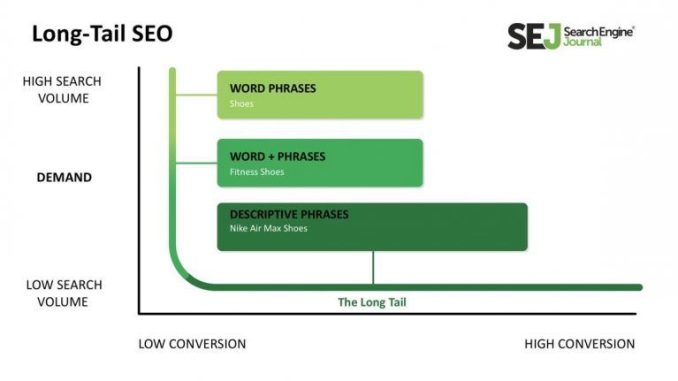
As a tech business, optimizing your website for search engines is crucial for attracting more traffic and potential customers. One effective way to improve your search engine optimization (SEO) strategy is by using long-tail keywords.
What Are Long-Tail Keywords?
Long-tail keywords are specific keyword phrases that are longer and more targeted than generic keywords. They typically consist of three or more words and are more descriptive of what a user is searching for. For example, instead of targeting the keyword “smartphone,” you could use a long-tail keyword like “best budget Android smartphone under $300.”
Why Are Long-Tail Keywords Important for SEO?
Long-tail keywords are essential for SEO because they help you target a more specific audience. By using long-tail keywords, you can attract visitors who are looking for exactly what you offer, increasing the chances of converting them into customers. Long-tail keywords also have lower competition compared to generic keywords, making it easier for your website to rank higher in search engine results.
How to Find Long-Tail Keywords
There are several tools and strategies you can use to find relevant long-tail keywords for your tech business:
Keyword Research Tools
Utilize keyword research tools such as Google Keyword Planner, SEMrush, or Ahrefs to discover long-tail keywords related to your industry. These tools provide valuable insights into search volume, competition, and suggested keyword variations that can help you optimize your website content.
Google Autocomplete
Take advantage of Google Autocomplete by typing in a generic keyword related to your business and observing the suggested long-tail keyword phrases that pop up. These autocomplete suggestions are based on actual user searches, making them valuable for finding relevant long-tail keywords.
Google Search Console
Review your website’s performance in Google Search Console to identify the long-tail keywords that are already driving traffic to your site. This data can help you optimize your content further and target additional long-tail keywords to attract more visitors.
Implementing Long-Tail Keywords on Your Website
Once you have identified relevant long-tail keywords for your tech business, it’s essential to strategically incorporate them into your website content. Here are some tips for using long-tail keywords effectively:
Optimize Your Meta Tags
Include long-tail keywords in your page titles, meta descriptions, and header tags to improve your website’s visibility in search engine results. Ensure that the keywords flow naturally within your content and provide valuable information to users.
Create Informative Content
Produce high-quality, informative content that incorporates long-tail keywords naturally. Focus on addressing your target audience’s specific needs and pain points to attract qualified leads and establish your authority in the tech industry.
Use Long-Tail Keywords in URLs
Include long-tail keywords in your website URLs to make them more descriptive and SEO-friendly. This not only helps search engines understand the content of your pages but also improves user experience by providing clear and relevant URLs.
Monitoring and Optimizing Long-Tail Keywords
After implementing long-tail keywords on your website, it’s crucial to monitor their performance and make necessary adjustments to improve your SEO strategy. Regularly review your website analytics and track the rankings of your targeted long-tail keywords to identify opportunities for optimization.
Track Keyword Rankings
Monitor the rankings of your long-tail keywords in search engine results to assess their performance and make informed decisions about your SEO strategy. Identify keywords that are driving traffic and conversions, as well as those that may require further optimization.
Update and Refine Your Content
Regularly update and refine your website content to ensure that your long-tail keywords are still relevant and effective. Consider creating new content pieces based on trending topics or user queries to attract more visitors and improve your overall SEO performance.
Conclusion
Using long-tail keywords is a powerful strategy for improving your tech business’s SEO and attracting more targeted traffic to your website. By conducting thorough keyword research, strategically implementing long-tail keywords, and monitoring their performance, you can enhance your search engine visibility and drive more qualified leads to your site. Incorporate long-tail keywords into your SEO strategy today to take your tech business to the next level.